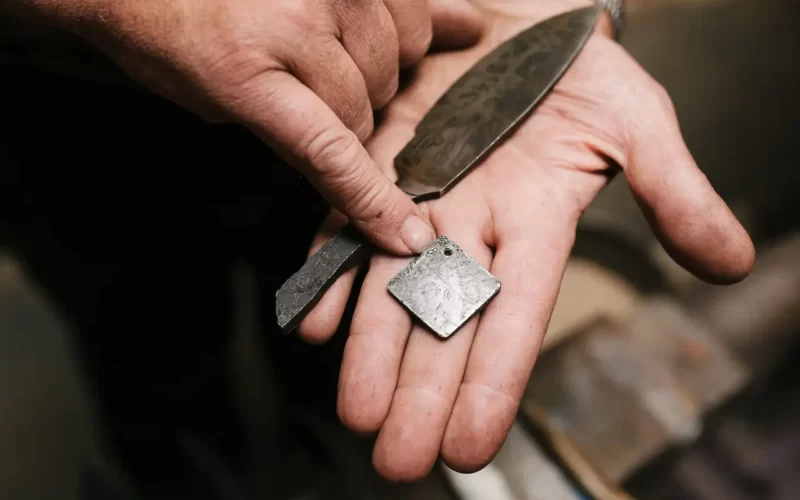Sifakas Street was and remains the historic road of knife craftsmen in the city of Chania, which is why it is also known locally as Mahairadika (“knife makers’ workshops”).
The birth of the Cretan knife goes back centuries. As a fundamental part and ornament of the Cretan traditional and authentic costume, the knife was a favorite, not only as a useful instrument but also as an honored weapon from the prehistoric years to the Minoan civilization and the Venetian, Ottoman barbaric Nazi occupations.
Since the Minoan era, the knife was a symbol of courage and freedom that contributed to their revolutions. Evidence for this has been found in a plethora of excavations around the island of Crete from Zaros to Falasairna and from Zakros to Eleftherna.
During the Ottoman occupation (1646 -1898), the art of making knives experienced a boom in Chania. The very first artisans were Turks, but soon some Cretan artisans appeared with some truly remarkable examples of exceptional craftsmanship.
Chania knife artisans (Maherades) settled right next to the ancient ruins, in the small moat that used to separate Kastelli from the rest of the city, which appears to have been maintained during Ottoman rule. Before the German bombing during the Second World War, the two levels of the road reached Daskalogianni Street.
Mahairadika: Connecting the Past & the Present
Nowadays, there are still a few younger craftsmen who have retained the art and artistry of construction of the handmade traditional Cretan knife and work with authentic traditional techniques, methods, and tools.
Some of the materials they use are bones, horns, olive wood as well as other kinds of wood like one of aspalathos, a small prickly bush. The handmade knives are heated in the furnace and then they are forged and quenched (hardened). These truthfully skilled and experienced craftsmen took their art to the next level, to the point that their knives became key elements of Cretan clothing and culture, but also a valuable product that was exported to the rest of Greece and abroad.
The authentic version appears to have been different from what we find today and enriched with elements of the Venetian and Turkish styles and traditions. Based on the type of use and the person for whom it was intended, the Cretan knife acquired different variations.
In particular, it was made of a blade of steel with a handle of an animal horn of some sort. The sheath material used was wood which was occasionally covered in leather. For formal occasions, these were made of silver (foukaria) and ornated with flowers, birds, dragons, and the like.
The most common traditional Cretan knife is the sharp “saita”. Typically, the handle of a Cretan knife ends in a V and the top of the sheath carries a cross on it, a distinguishing feature from the Turkish ones. Another characteristic is their forked handle. In many cases, the blade was inscribed with a ‘mantinada’ – a verse.
Handmade knife craftsmanship has always been a difficult job, due to the high temperatures and smoke in the workroom, and the frequent minor traumatic injuries suffered while working. This has discouraged many young craftsmen in the last decades from continuing to do this work.








